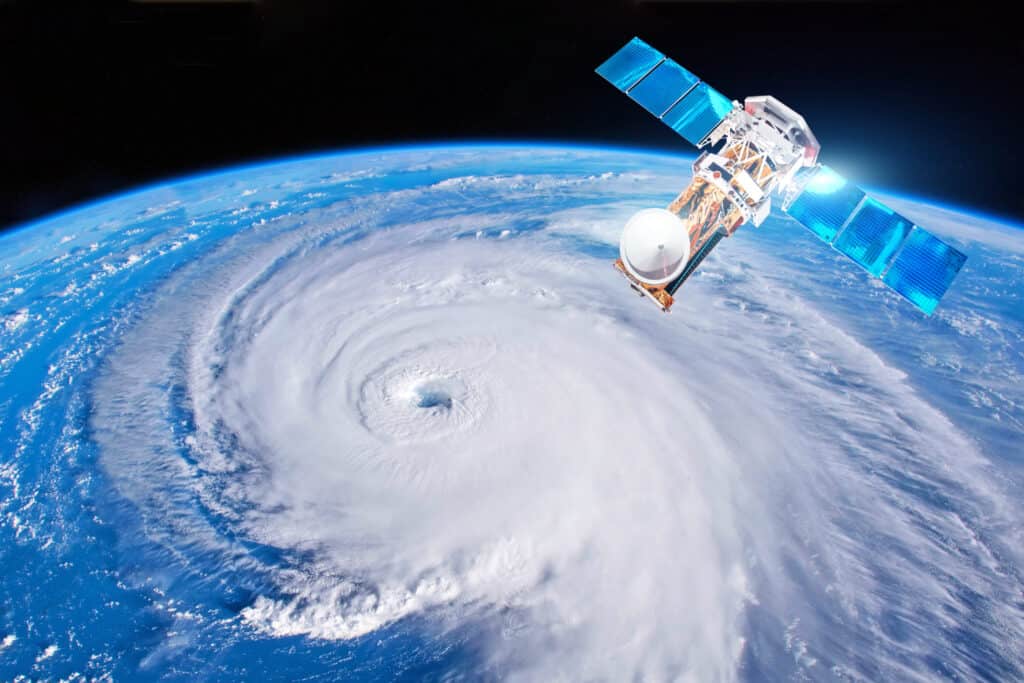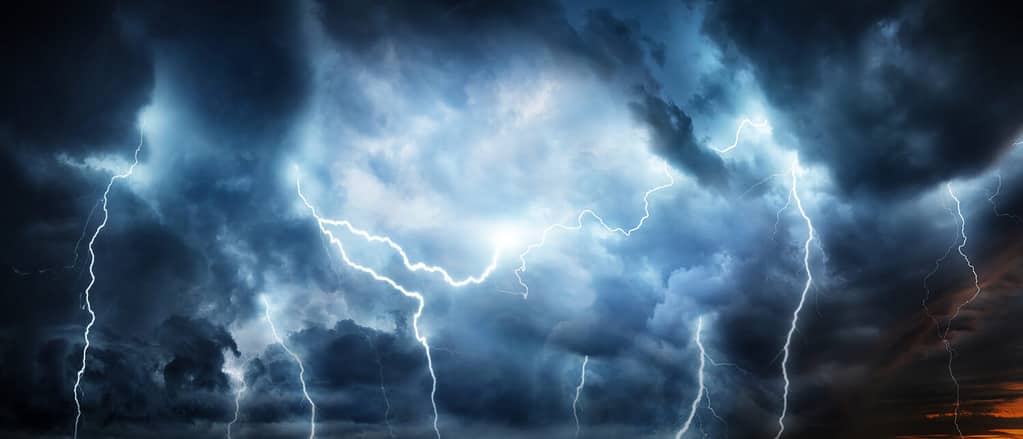If you have ever checked the weather app on your phone, you’ve likely noticed an extended forecast available for view. For example, perhaps you’re looking ahead at the following week’s chance of precipitation to ensure your beach vacation isn’t at risk; or maybe you have an outdoor celebration planned ten days ahead and want to know just how hot it will be for guests. These 10-day forecasts can provide great insight into future weather patterns, but how accurate are they really?
Can you actually rely on long-term weather projections, or should you only use them as a loose guide? Discover how meteorologists make weather forecasts, which tools they utilize, and the accuracy of various forecast durations.
How Weather Forecasts Are Made
Before we discuss the accuracy of 10-day weather forecasts, let’s first learn how they’re made and predicted in the first place. Here are three different tools the National Oceanic and Atmospheric Administration (NOAA) and the National Aeronautics and Space Administration (NASA) use to monitor Earth’s weather.

Earth’s satellites can track storms in real time.
©aappp/Shutterstock.com
Geostationary Satellites
The NOAA’s geostationary satellites, also known as Geostationary Environmental Operational Satellite-R (GOES-R) series satellites, create a picture of current weather in real time. Orbiting 22,236 miles above Earth’s equator at the same speed as Earth’s rotation, the satellites provide continuous and accurate atmospheric measurements of the hemispheres. They can track lightning activity and strike locations, monitor solar activity, and keep track of storm development, such as how quickly a hurricane is growing and in which direction it’s moving.
There are multiple GOES satellites in the series, covering Earth as a whole. As part of the GOES-R Program, NOAA and NASA work together to capture accurate weather forecasts for worldwide users. NASA builds and launches the satellites, while NOAA operates the satellites and distributes their collected data so users can access weather reports.
Polar-Orbiting Satellites
NOAA’s polar-orbiting satellites, also known as Polar Operational Environmental Satellites (POES), complement geostationary satellites. NOAA uses polar-orbiting satellites to circle the Earth from north to south and provide daily global coverage. These satellites orbit approximately 520 miles above Earth and zip around the planet 14 times per day. They monitor our atmosphere, clouds, and oceans to make accurate weather predictions and long-term forecasts of up to seven days in the future. This is how we get our extended forecasts, as the satellites can measure the Earth’s atmospheric radiation and the sea surface temperature.
Deep Space Satellite
NOAA’s Deep Space Climate Observatory (DSCOVR), launched in 2015, orbits one million miles from Earth and monitors solar wind in real time. This helps to provide accurate space weather alerts and forecasts, ensuring users are up-to-date on timely events like geomagnetic storms that can disrupt major public infrastructure systems like power grids, telecommunications, aviation, and GPS.
DSCOVR can also observe ozone and aerosols in Earth’s atmosphere to predict air quality forecasts, alerting those in unhealthy environments with poor air quality due to events like wildfires or pollution.
How Accurate Is a 10-Day Weather Forecast?
A 10-day forecast is only accurate about 50% of the time. Any forecast over ten days in advance is subject to inaccuracies and poor measurements. Our computer programs and satellites can’t collect data from the future. This means meteorologists must estimate and even guess how future weather will play out, which is going to be unreliable much of the time. Because the weather and atmosphere are constantly changing, you shouldn’t trust weather predictions that are ten or more days in advance. However, you can reference the extended forecast as a loose guide with a dose of skepticism.

Severe storms are difficult to predict, as they often pop up at the last minute.
©Triff/Shutterstock.com
How Accurate Are Weather Forecasts of Various Durations?
Now that you know 10-day (and longer) forecasts aren’t as reliable as you might have thought, let’s explore how accurate forecasts of other durations are. Keep in mind, however, meteorologists track various weather patterns and data points, with some easier to measure than others.
One-Day Forecast Accuracy
No weather forecast will ever be 100% accurate, as it’s impossible to know for certain how Mother Nature will behave from moment to moment. Specifically, the most difficult weather event to track is heavy rain. Additionally, severe weather events like thunderstorms and tornadoes can form seemingly out of nowhere. Predicting a storm accurately is hard unless it’s just a few hours ahead. In fact, you’ve likely experienced this firsthand. Perhaps you’ve been driving home on a summer day only to encounter an unexpected thunderstorm or flash flooding within minutes. Weather isn’t always predictable, but scientists do their best with the data and tools they’re given.
Still, one-day forecasts are generally accurate — with success rates between 96–98%.
Three-Day Forecast Accuracy
As the duration increases, the forecast becomes less accurate. Still, three-day forecasts are relatively accurate — and they’re a popular forecast duration of time. When planning ahead, many will look three days in advance to get a good idea of how the weather will be. This is because the success rate is still at or above 90%.
Keep in mind, however, that accuracy can vary depending on the terrain. For example, you won’t get as accurate of a forecast for mountainous areas when compared to flatland.
Five-Day Forecast Accuracy
Dropping slightly in accuracy, the five-day forecast has at or below a 90% success rate, with the rate dropping significantly from there on out. This is the last “accurate” forecast available, but even so, it’s not always what you’d expect it to be. This is why many meteorologists receive criticism for their inaccurate predictions. Many non-experts expect them to have all the answers when that simply isn’t possible so far in advance. In fact, it isn’t even possible just a day in advance.
Seven-Day Forecast Accuracy
Once you reach the seven-day forecast, the accuracy drops to 80% or lower. Anything beyond that is simply an estimated guess or mere assumption, meaning you shouldn’t rely on it for anything important. This is why rain checks exist for outdoor events.
Why Forecast Accuracy Decreases Beyond Seven Days
Many factors go into weather forecast predictions; some weather patterns are easier to track than others. For instance, severe storms and heavy rainfall are extremely hard to measure — even just a day in advance. On the other hand, the temperature is a bit easier to estimate using past averages for the area. Tracking these things to the hour, however, is nearly impossible to do in advance — especially if you’re looking at 10-day forecasts.

Heavy rain is the hardest weather pattern to track, making it difficult to predict flooding.
©Everett Collection/Shutterstock.com
Beyond seven days, various limitations prevent us from making an accurate long-range forecast. Meteorologists cannot outsmart Mother Nature and her erratic behavior because the weather is unpredictable (even hour-to-hour event!).
The American Meteorological Society actually warns against using forecasts for longer ranges than seven days, deeming them unreliable. There are too many atmospheric elements to track, including temperature, wind, pressure, precipitation, and more. It’s impossible to track these future data points.
So, should you rely on a 10-day forecast? If you’d trust a guestimated assumption by a meteorologist (who is not confident in his own answer — meteorologists know it’s impossible to predict with certainty that far in advance), then sure, you can trust that your vacation in 10 days will be warm and sunny all week long. But realistically, no one can accurately plan that far in advance — not even the experts. Take it with a grain of salt.
The photo featured at the top of this post is © Leestudio/Shutterstock.com
Thank you for reading! Have some feedback for us? Contact the AZ Animals editorial team.







